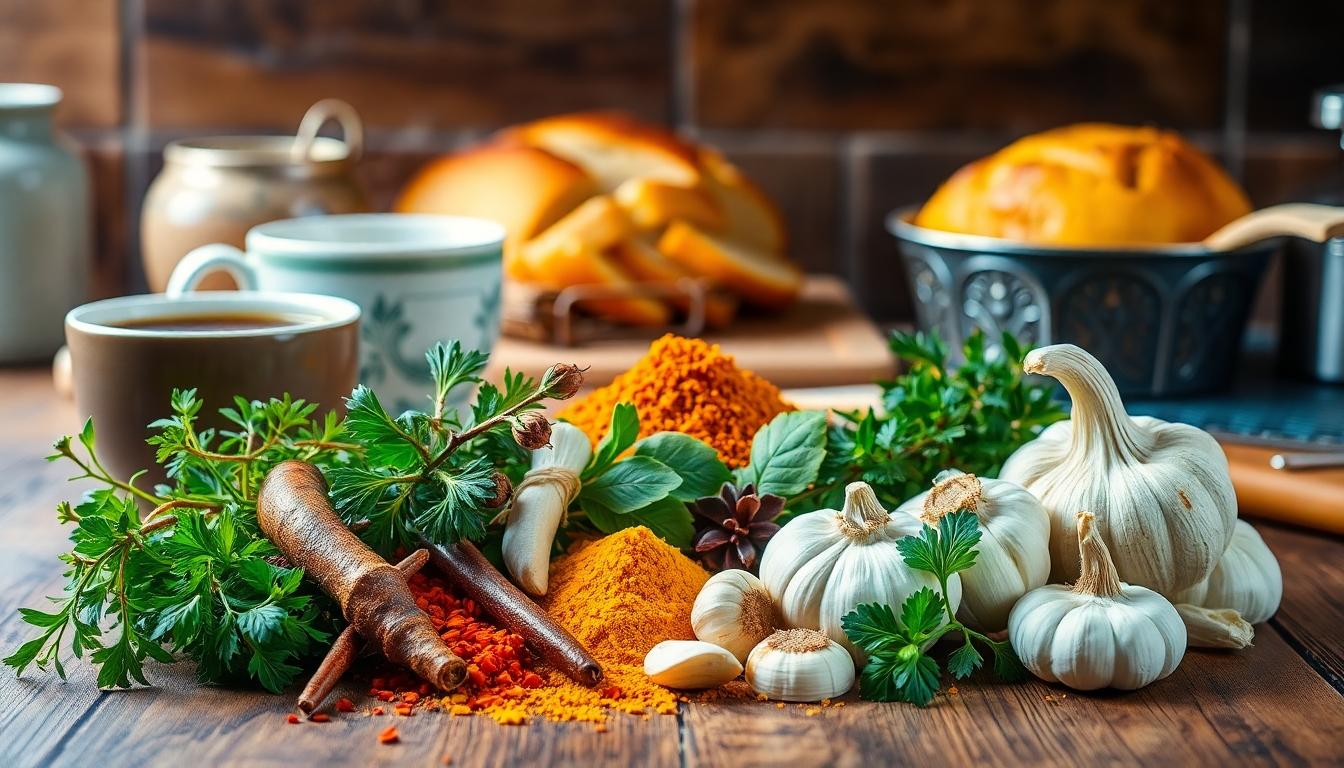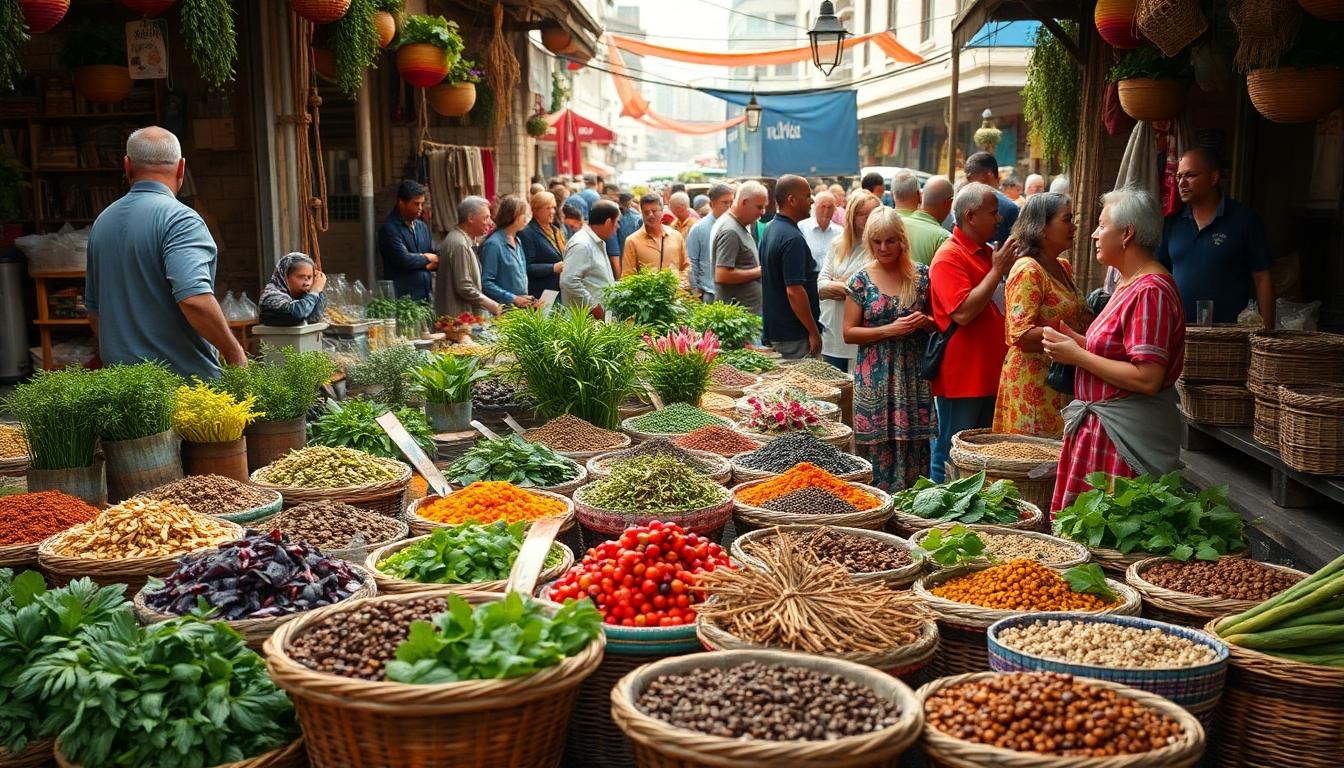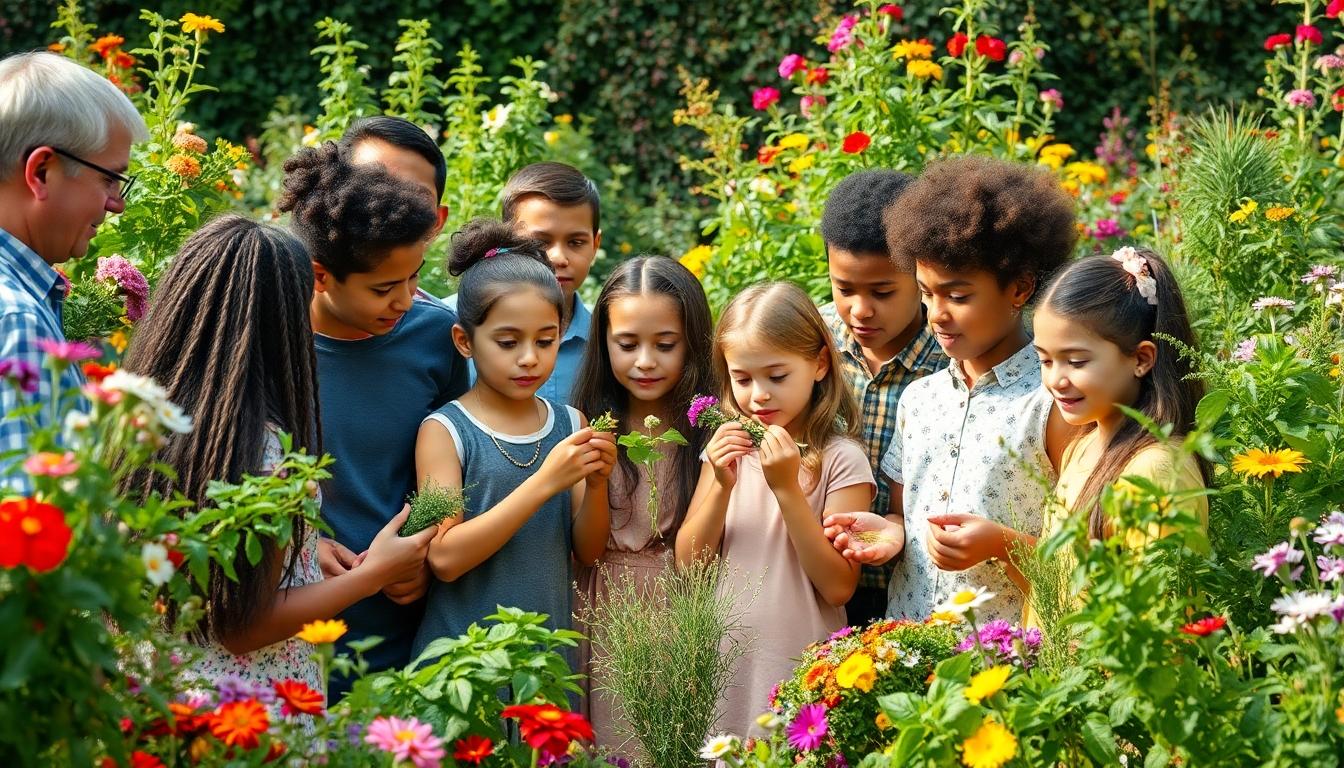Have you ever been stumped by a brain teaser that tickles your sense of smell? We’ve gathered the most intriguing riddles about scents that will challenge your mind and nose alike. These olfactory puzzles aren’t just fun—they’re a fantastic way to sharpen your thinking skills while exploring one of our most primal senses.
From ancient folklore to modern brainteasers, smell-based riddles have captivated puzzle enthusiasts throughout history. We’ll take you through a collection of the best scent riddles that range from surprisingly simple to delightfully difficult. Whether you’re looking to entertain friends at your next gathering or simply enjoy a mental workout, these aromatic enigmas are sure to leave a lasting impression.
10 Challenging Riddles About Smell That Will Test Your Senses
- The Invisible Thief: I enter your home without permission, change how you feel about your surroundings, yet leave no trace of my presence. You can’t see me or touch me, but my presence lingers. What am I?
Answer: A smell/odor/scent - The Silent Messenger: I travel for miles without moving my feet, I can bring joy or cause retreat, I’m invisible to the eye but powerful to the mind. What am I?
Answer: A smell/aroma - The Memory Keeper: I transport you back in time without a machine, connect you to places you’ve never seen, and trigger emotions buried deep within. What am I?
Answer: A fragrance/scent - The Shapeless Entity: I have no form yet fill every space, I can’t be held but can be trapped, I fade away but never truly disappear. What am I?
Answer: An odor/smell - The Seasonal Visitor: I arrive with fallen leaves and burning wood, I make you think of holidays and childhood, I disappear when snow melts away. What am I?
Answer: Autumn/fall scents - The Culinary Detective: I tell you what’s cooking before you see it, I make your stomach growl from another room, I reveal secrets from behind closed doors. What am I?
Answer: Food aromas/cooking smells - The Warning System: I alert you to danger without making a sound, I can save your life while you sleep, I detect what eyes cannot see. What am I?
Answer: Smoke smell/gas odor - The Two-Faced Friend: I’m welcomed when I first arrive but unwanted when I stay too long, I’m shared without permission, I change from pleasant to offensive with time. What am I?
Answer: Perfume/cologne/fragrance - The Invisible Boundary: I mark territories without fences, I communicate without words, I identify without labels. Animals rely on me daily. What am I?
Answer: Scent markers/pheromones
The Invisible Detective: Understanding How Smell Riddles Work

Why Smell Makes for Intriguing Riddles
Smell riddles captivate our minds because they engage a sense we often take for granted yet rely on constantly. Our olfactory system connects directly to the brain’s emotion and memory centers, making scent-based puzzles particularly evocative and memorable. Unlike visual or auditory riddles, smell puzzles tap into our primal instincts and can trigger powerful emotional responses without warning. The elusive nature of scents—how they drift, linger, and disappear—creates perfect material for brain teasers that challenge conventional thinking patterns. Many smell riddles work by playing with familiar aromas in unfamiliar contexts, forcing us to reconsider everyday scents from new perspectives. The subjective experience of smell also adds complexity to these riddles, as no two people perceive the same scent in exactly the same way.
The Science Behind Our Sense of Smell
Humans can detect approximately 1 trillion different odors thanks to roughly 400 types of olfactory receptors in our nasal passages. These specialized receptors capture airborne molecules and translate them into electrical signals that travel directly to the olfactory bulb. Unlike other senses, smell information bypasses the thalamus and goes straight to the limbic system, explaining why scents trigger immediate emotional reactions and vivid memories. Research from the Monell Chemical Senses Center shows that people can remember smells with 65% accuracy after a year, compared to just 50% accuracy for visual recall after three months. Our brains process smell differently than other sensory inputs, forming neural connections that link odors with experiences, people, and places. This unique processing explains why smell riddles can feel both challenging and deeply satisfying to solve. Evolutionary biologists suggest our sophisticated smell detection developed as a survival mechanism, helping our ancestors identify food sources, detect dangers, and even choose compatible mates.
Nostril-Twisting Nature Riddles: Aromas From the Outdoors

Nature provides some of the most distinct and memorable scents in our industry, making it perfect inspiration for smell-based riddles. Let’s explore some brain-teasers that celebrate the fragrant outdoors.
Forest and Flower Fragrance Brain Teasers
- The Silent Singer: I fill the air with sweetness in spring, attract buzzing visitors with my perfume, yet never make a sound myself. What am I? (Answer: Flowers)
- The Underground Treasure: My pungent aroma rises from beneath the forest floor, gourmets seek me out, and animals can smell me through layers of soil. What am I? (Answer: Truffles)
- The Weeping Giant: I release a clean, sharp scent when my skin is broken, my tears heal wounds, and forests of my kind create a calming atmosphere. What am I? (Answer: Eucalyptus tree)
- The Sticky Sentinel: My golden tears trap insects, my aroma fills cathedrals, and when burned, I purify spaces around me. What am I? (Answer: Pine resin/Frankincense)
- The Wild Carpet: I release a fresh, earthy smell when crushed underfoot, cover forest floors in green velvet, and thrive where dampness lives. What am I? (Answer: Moss)
Weather and Season Scent Conundrums
- The Electric Messenger: I arrive before the storm, carry a sharp metallic note, and disappear when rain begins to fall. What am I? (Answer: Petrichor/Ozone before rain)
- The Frozen Cleaner: I have no scent until I melt, carry the essence of the sky, and make everything smell crisp and new. What am I? (Answer: Snow)
- The Golden Decay: I create a sweet, musty perfume that signals change, cover the ground in auburn and gold, and crunch beneath wandering feet. What am I? (Answer: Autumn leaves)
- The Summer Messenger: My scent fills the air on hot evenings, I glow while releasing my distinctive aroma, and children chase me through twilight gardens. What am I? (Answer: Barbecue smoke)
- The Morning Blanket: I appear with the sunrise, carry the mixed scents of grass and earth, and vanish when the sun climbs high. What am I? (Answer: Morning dew)
Kitchen Mystery Riddles: Food and Cooking Aromas

The kitchen serves as a treasure trove of tantalizing scents that can transport us through memories and cultures with just one whiff. Our collection of kitchen-themed riddles will challenge your olfactory knowledge while celebrating the aromatic industry of cooking.
Spice Rack Puzzlers
- The Red Guardian: I’m fiery hot with a crimson hue, sprinkled on pizza and chili stew. What am I? (Answer: Cayenne pepper)
- The Yellow Mystery: I color your curries and stain your hands, with a bitter taste and medicinal stands. What am I? (Answer: Turmeric)
- The Sweet Deceiver: I’m often mistaken for my cousin, but I’m sweeter and found in pumpkin pies and cinnamon rolls. What am I? (Answer: Nutmeg)
- The Aromatic Twins: We share a plant but serve different roles, one from the bulb, one from the stem, both making eyes water when chopped. What are we? (Answer: Garlic and onion)
- The Fragrant Queen: My tiny purple flowers perfume the air, I flavor lamb and calm your nerves with care. What am I? (Answer: Lavender)
- The Pungent Treasure: Buried underground until harvest day, my strong scent keeps vampires away. What am I? (Answer: Garlic)
Baking and Brewing Brainteasers
- The Rising Mystery: I’m invisible until I work my magic, making dough grow twice its size without any tragic. What am I? (Answer: Yeast)
- The Morning Motivator: My aroma wakes households across the land, dark and rich when properly brewed by hand. What am I? (Answer: Coffee)
- The Sweet Cloud: I transform from grainy crystals to sticky threads, improving desserts and covering gingerbread. What am I? (Answer: Caramelized sugar)
- The Vanilla Secret: I come from a tropical orchid pod, dark and wrinkled with tiny seeds, treasured more than gold. What am I? (Answer: Vanilla bean)
- The Festive Spirit: My scent fills homes during holiday baking, combining ginger, cloves, and cinnamon for the taking. What am I? (Answer: Gingerbread)
- The Aromatic Memory: Freshly baked, my smell is universally loved, often used by realtors to make houses feel like home. What am I? (Answer: Bread)
- The Bitter Delight: My beans require roasting to release their charm, providing morning vigor and afternoon calm. What am I? (Answer: Coffee)
Everyday Scent Enigmas: Common Smells in Riddle Form

The aromas we encounter daily often go unnoticed, yet they provide perfect material for brain-teasing riddles. Our collection of everyday scent enigmas will challenge your knowledge of common smells lurking in plain sight.
Household Aroma Riddles
- The Invisible Cleaner: I make your home sparkle with a lemony blast, leaving surfaces shiny and germs in the past. What am I? Answer: Furniture polish
- The Midnight Alert: I beep when danger lurks in the air, a burnt toast’s companion causing quite a scare. What am I? Answer: Smoke detector
- The Basement Guardian: I fight dampness wherever I roam, keeping mold and mustiness out of your home. What am I? Answer: Dehumidifier
- The Winter Comforter: I warm your rooms and leave a dusty trace, my first use each season creates a distinct space. What am I? Answer: Heater
- The Laundry Assistant: I make clothes smell fresh as spring flowers, my scent lingers for hours and hours. What am I? Answer: Fabric softener
- The Kitchen Savior: I eliminate odors from fish and strong curry, making cooking adventures less of a worry. What am I? Answer: Exhaust fan
- The Underground Warning: I smell like rotten eggs and signal danger near, a leak that requires immediate action out of fear. What am I? Answer: Natural gas
- The Welcome Helper: I greet guests at your doorstep with aromas sweet, a first impression maker that’s hard to beat. What am I? Answer: Air freshener
Personal Product Puzzles
- The Morning Ritual: I foam and bubble with scents of mint or cinnamon spice, making your breath fresh and oh so nice. What am I? Answer: Toothpaste
- The Shower Companion: I come in bars or liquid form, creating lather to keep you warm. My scents range from fruity to flower, extending beyond your shower hour. What am I? Answer: Soap
- The Daily Shield: I protect against odor throughout the day, keeping sweat smells effectively at bay. What am I? Answer: Deodorant
- The Hair Reviver: I cleanse your locks and make them shine, leaving a fragrance that smells divine. What am I? Answer: Shampoo
- The Face Friend: I remove makeup and daily grime, with gentle scents of cucumber or lime. What am I? Answer: Facial cleanser
- The Hand Helper: I kill germs without water or sink, leaving your palms smelling of alcohol and often pink. What am I? Answer: Hand sanitizer
- The Morning Wake-Up: I help you start your day with energy and zest, my aroma wafting through your home with the very best. What am I? Answer: Coffee
Historical Smell Riddles From Around the World

Throughout human history, cultures across the globe have incorporated scent into their riddles and puzzles, creating a rich tapestry of olfactory challenges that reflect local environments and cultural values.
Ancient Smell Riddles and Their Origins
Egyptian hieroglyphs reveal some of the earliest recorded smell riddles, dating back to 3000 BCE, where priests posed olfactory challenges involving sacred oils and incense. Mesopotamian clay tablets preserve riddles about aromatic herbs that tested both intelligence and knowledge of medicinal plants. In ancient Greece, the Oracle of Delphi sometimes delivered prophecies accompanied by aromatic puzzles involving bay laurel and other sacred scents. Roman riddle games at feasts frequently incorporated questions about exotic spices brought from distant lands, serving as entertainment while displaying the host’s wealth and connections. Sanskrit texts from India contain many smell-based enigmas about sandalwood, jasmine, and lotus fragrances used in religious ceremonies. Chinese Taoist manuscripts from the Han Dynasty feature puzzles about herbal scents related to longevity and spiritual enlightenment, demonstrating the connection between smell and philosophical thought.
Cultural Variations in Scent-Based Puzzles
Middle Eastern folklore boasts an abundance of riddles about oud, rose water, and saffron, reflecting the region’s rich perfume-making traditions. Nordic cultures developed puzzles centered around pine, smoke, and snow scents, highlighting their connection to survival in harsh winter environments. African tribal riddles often feature aromas from exact trees and plants used in traditional medicine, passing down important botanical knowledge. Mediterranean fishing communities created puzzles about sea breezes and fish odors that tested sailors’ navigation abilities. Japanese Zen koans occasionally employ fragrance as metaphors, such as “What is the smell of enlightenment?” challenging spiritual seekers. Native American riddle traditions incorporate distinct regional scents like sage, sweetgrass, and cedar, connecting puzzles to spiritual practices. Persian poetry contains elaborate scent riddles that compare human emotions to different fragrances, creating metaphorical connections between internal feelings and external aromas. Colonial American puzzle books featured riddles about imported spices and locally grown herbs, blending European traditions with New Industry scents. Australian Aboriginal dreamtime stories include riddle-like passages about eucalyptus and other bush scents that signal weather changes, teaching practical survival skills through captivating brain teasers.
Solving Techniques: How to Crack Olfactory Riddles

Focus on Descriptive Clues
Successful olfactory riddle solving begins with paying close attention to descriptive words. Adjectives like “sweet,” “pungent,” or “earthy” often provide critical hints about the scent being described. The key is to visualize these descriptors and mentally connect them to familiar smells from your experience. Reading the riddle aloud can sometimes trigger sensory memories that might not activate when reading silently. Many expert riddle solvers recommend creating a mental “scent library” by consciously noting and remembering distinctive smells encountered in daily life.
Consider Context and Categories
Context offers vital information when tackling smell-based puzzles. Riddles typically frame scents within exact environments such as kitchens, nature, or household settings. The category can narrow down possible answers dramatically—for instance, a riddle set in a bakery likely refers to vanilla, cinnamon, or yeast rather than mechanical or outdoor scents. Professional riddlers often plant subtle contextual clues within the setup of their puzzles, mentioning seasons, locations, or activities that guide solvers toward the correct scent category.
Look for Cultural References
Cultural associations with certain smells can provide important clues in olfactory riddles. References to holidays might suggest pine (Christmas), pumpkin spice (autumn celebrations), or floral scents (spring festivals). Historical or geographical mentions can point to region-exact aromas like certain spices or cooking techniques. We’ve found that understanding these cultural connections allows solvers to decode riddles that might otherwise seem obscure. Some of the most challenging smell riddles intentionally play with cross-cultural scent associations to test the solver’s broader knowledge.
Identify Emotional Connections
The emotional response triggered by a smell often features prominently in riddles. Terms like “comforting,” “nostalgic,” or “alarming” provide important clues about the target scent. Riddles frequently leverage the emotional impact of smells—connecting burning odors with danger or sweet baking aromas with comfort and home. Research shows our olfactory system maintains strong links to emotional memory centers in the brain, making emotional cues particularly effective in smell-based puzzles. Experienced solvers learn to recognize when a riddle aims to evoke an emotional response rather than simply describing physical properties.
Apply Word Association Techniques
Word association proves remarkably effective for cracking olfactory riddles. Creating a quick mental map of words related to the clues often leads to breakthrough connections. Terms like “sharp” might connect to citrus or vinegar, while “smoky” could suggest fire, barbecue, or certain whiskeys. Professional puzzle solvers recommend writing down these associations when stuck on particularly challenging riddles. The practice of deliberate word association expands your thinking beyond obvious connections and opens pathways to more creative answers.
Break Down Metaphorical Language
Metaphors appear frequently in smell riddles to describe scents that might be difficult to name directly. Phrases like “nature’s perfume” or “kitchen’s signature” require interpretation rather than literal understanding. Breaking down these figurative expressions often reveals the underlying scent being described. The most intriguing riddles typically employ multiple layers of metaphor, requiring solvers to unpack each level of meaning. Training yourself to recognize and decode metaphorical language significantly improves your success rate with complex olfactory puzzles.
Use Process of Elimination
When facing particularly challenging smell riddles, systematic elimination of possibilities can yield results. Start by listing all potential answers based on the clues provided, then methodically rule out options that don’t fit all aspects of the riddle. Professional puzzle solvers apply this technique by first identifying the category (food, nature, danger, etc.), then narrowing down to exact scents within that category. The elimination method works especially well for competition settings where multiple riddles share similar themes but require different answers.
Practice Active Smell Awareness
Developing your “smell vocabulary” dramatically improves your ability to solve olfactory riddles. Taking time to actively notice and name scents encountered throughout the day builds a mental reference library. Experts recommend spending a few minutes daily identifying smells in different environments—from the spice cabinet to outdoor spaces. Research indicates that people who regularly practice scent identification can name approximately 40% more odors than those who don’t engage in such exercises. This expanded awareness creates a richer database of experiences to draw from when confronting smell-based puzzles.
Science-Based Smell Riddles for Educational Fun

The Chemistry of Scents
- Volatile Mystery: I’m made of molecules that easily evaporate at room temperature, allowing you to detect me from across the room. Without me, perfumes would have no reach. What am I? (Answer: Volatile organic compounds)
- Carbon Chain Puzzle: The longer my carbon chain, the heavier I become and the less likely I am to reach your nose quickly. Perfumers call me a “base note” when I’m in this form. What scientific property am I describing? (Answer: Molecular weight)
- Solvent Riddle: I help aromas dissolve and disperse, playing a critical role in perfumery and cooking. Without me, many scents would remain trapped. What am I? (Answer: Ethanol/alcohol)
- Receptor Challenge: I have hundreds of types but can recognize thousands of different odors. Scientists are still puzzled by exactly how I work. What am I? (Answer: Olfactory receptor)
The Biology of Smell
- Neural Pathway: Information from your nose travels through me before reaching your brain’s olfactory bulb. I contain millions of sensory neurons with specialized cilia. What am I? (Answer: Olfactory epithelium)
- Adaptation Enigma: I’m the reason you stop noticing a persistent smell after a few minutes, though the odor molecules are still present. What biological process am I? (Answer: Olfactory adaptation)
- Retronasal Riddle: I enhance your sense of taste when air carrying food molecules travels from your mouth to your nasal cavity. What am I? (Answer: Retronasal olfaction)
- Genetic Variation: Some people can smell me strongly while others can’t detect me at all. This difference is determined by a exact gene variant. I smell like urine or asparagus to those who can detect me. What compound am I? (Answer: Methanethiol/asparagus metabolite)
Smell Psychology and Perception
- Memory Link: I form stronger connections to memories and emotions than any other sense due to my direct pathway to the limbic system. What neurological phenomenon am I? (Answer: Proust effect/olfactory memory)
- Phantom Detection: Sometimes you perceive me even when I’m not physically present, especially after traumatic experiences or with certain medical conditions. What phenomenon am I? (Answer: Phantosmia)
- Chemical Warning: I trigger immediate aversion and protect you from potential dangers by activating both your olfactory system and your trigeminal nerve. What type of odor am I? (Answer: Trigeminally-mediated odor/irritant)
- Cross-Modal Perception: I explain why food sometimes tastes different when you have a cold or hold your nose. What scientific principle am I? (Answer: Flavor perception integration)
Evolutionary Smell Science
- Survival Mechanism: I helped your ancestors avoid spoiled food and dangerous environments long before they understood microbes. What evolutionary adaptation am I? (Answer: Disgust response)
- Pheromone Mystery: Though definitively proven in many animals, scientists debate my existence and role in human behavior. What controversial chemical communication am I? (Answer: Human pheromones)
- Genetic Diversity: I might help you select mates with different immune system genes to produce offspring with stronger immunity. What evolutionary theory am I? (Answer: Major histocompatibility complex preference)
Creating Your Own Original Smell Riddles

After exploring so many fascinating smell riddles, you might feel inspired to create your own olfactory puzzles. Creating original smell riddles allows you to exercise your creativity while challenging friends and family with personalized brain teasers. We’ve compiled a step-by-step guide to help you develop memorable and captivating smell-based riddles that will tantalize the senses and stimulate the mind.
Choose Your Scent Subject
The foundation of any great smell riddle begins with selecting the right scent to feature. Consider these approaches:
- Start with familiar aromas that most people can identify, such as coffee, cinnamon, or gasoline.
- Look around your environment for inspiration—household products, garden flowers, or cooking ingredients offer plenty of material.
- Think seasonally by focusing on scents associated with exact times of year like pumpkin spice in autumn or sunscreen in summer.
- Consider cultural connections to certain smells that might resonate with your audience.
- Explore unique or unusual scents that might challenge solvers in interesting ways.
Create the Riddle Structure
Building an effective riddle requires thoughtful construction:
- Begin with sensory descriptions that hint at the smell without naming it directly.
- Incorporate metaphors and similes to describe the scent’s qualities, such as “I’m sharp like winter but warm like wool.”
- Add contextual clues about where the smell might be encountered.
- Include subtle hints about the scent’s origin or composition.
- Consider using rhyming patterns to make your riddle more memorable and captivating.
- Balance difficulty by providing enough information to make the riddle solvable without making it too obvious.
Use Literary Devices
Elevate your riddles with creative language techniques:
- Personification brings your scent to life—”I dance through bakeries each morning.”
- Paradoxes create intrigue—”I’m welcomed at dinner but unwelcome on breath.”
- Wordplay adds complexity—”I’m read but never written” for a book smell riddle.
- Double meanings challenge the solver to think beyond literal interpretations.
- Alliteration makes riddles more memorable—”Fragrant and fierce, I flavor festivities.”
Test and Refine
Perfecting your riddle requires feedback and revision:
- Try your riddle on friends and observe their reactions and solving process.
- Note which clues were helpful and which led people astray unintentionally.
- Adjust the difficulty level based on your target audience—children might need more direct clues while adults can handle subtlety.
- Refine your language to eliminate unintended hints or overly obscure references.
- Consider creating sets of riddles with varying difficulty levels for different audiences.
Example Creation Process
Follow this practical example to understand the riddle creation journey:
- Select your scent: Freshly cut grass
- Brainstorm associations: Summer, lawnmowers, green, freshness, childhood memories
- Draft initial riddle: “I’m born when blades fall, though no blood is spilled. I remind you of summers and childhood hills.”
- Add sensory details: “Green is my essence, fresh is my call.”
- Complete the riddle: “I’m born when blades fall, though no blood is spilled. Green is my essence, fresh is my call. I remind you of summers and childhood hills. What am I?”
- Test and refine until you’ve struck the perfect balance of challenge and solvability.
By following these guidelines, you’ll soon be creating unique smell riddles that challenge and delight your friends and family while showcasing your creativity and understanding of the powerful connection between scents and memory.
Why Smell Riddles Sharpen Your Cognitive Abilities
We’ve journeyed through the intriguing area of smell riddles from ancient traditions to kitchen conundrums and scientific puzzles. These olfactory challenges do more than entertain—they strengthen neural connections between our memory and reasoning centers.
Next time you encounter a mysterious scent don’t just identify it—challenge yourself to create a riddle about it. This practice enhances your sensory awareness and creative thinking simultaneously.
Remember that our sense of smell offers a unique gateway to cognitive development that’s often overlooked. By captivating with these scent-based puzzles we’re exercising both hemispheres of our brain while building a richer connection to the aromatic industry around us.
Ready to put your nose to work? The adventure into the industry of smell riddles awaits!
Frequently Asked Questions
What are smell riddles?
Smell riddles are puzzles that challenge both your mind and your sense of smell. They incorporate scent descriptions or olfactory references that require you to identify specific smells based on clues. These brain teasers have historical roots in many cultures and can range from simple to complex, making them entertaining for all ages while exercising your cognitive abilities.
Why are smell riddles particularly effective at triggering emotions?
Smell riddles tap into the unique connection between our olfactory system and the brain’s emotion and memory centers. Unlike other sensory information, smell signals bypass the thalamus and go directly to the limbic system, causing immediate emotional reactions. This direct neural pathway explains why certain scents can instantly transport us back to childhood memories or evoke strong feelings.
How many different odors can humans detect?
Humans can detect approximately 1 trillion different odors, which is far more than previously believed. This remarkable sensitivity explains why smell riddles can be so nuanced and challenging. Our olfactory system contains about 400 types of scent receptors that can combine in countless ways to identify the vast array of scents we encounter throughout our lives.
What cultures have historically used smell riddles?
Smell riddles appear across numerous cultures including ancient Egyptian, Mesopotamian, Greek, Roman, Indian, and Chinese traditions. Middle Eastern, Nordic, African, Mediterranean, Japanese, Native American, and colonial American societies also developed unique olfactory puzzles. These riddles often reflected local environments, available spices, flowers, and cultural values specific to each civilization.
How can I improve my ability to solve smell riddles?
To improve your smell-solving skills, focus on descriptive clues, consider context, and recognize cultural references. Build a robust “smell vocabulary” by actively noticing and naming scents in your daily life. Practice word association, break down metaphorical language, and use the process of elimination when tackling complex riddles. Regular practice will strengthen your olfactory memory and analytical abilities.
What makes nature-inspired smell riddles unique?
Nature-inspired smell riddles celebrate outdoor aromas and our connection to the natural world. These puzzles feature scents from flowers, trees, soil, and seasonal phenomena like petrichor before rain. They challenge our ability to recall natural fragrances we may encounter less frequently in urban environments, highlighting the rich olfactory landscape that exists beyond human-made products.
Can smell riddles have educational value?
Absolutely! Science-based smell riddles combine fun with education by exploring chemistry, biology, psychology, and evolutionary concepts. They teach about volatile organic compounds, olfactory receptors, and neurological processes. These puzzles help people understand the biological importance of smell in survival, mate selection, and memory formation while providing an engaging learning experience.
How can I create my own smell riddles?
To create your own smell riddles, start by selecting distinct scents people can easily recognize. Structure your riddle with descriptive clues, metaphors, and wordplay that hint at the answer without being too obvious. Include sensory associations, emotional connections, or cultural references. Test your riddles on friends and refine them based on feedback to find the perfect balance of challenge and solvability.
Are kitchen-themed smell riddles the easiest to solve?
Not necessarily. While kitchen scents may be familiar to many people, their complexity can make these riddles challenging. Culinary riddles often incorporate spices, baking aromas, and brewing scents that can be similar or contain subtle distinctions. Your ability to solve them depends on your cooking experience and how attentive you’ve been to different food aromas throughout your life.
How do everyday scent riddles differ from other categories?
Everyday scent riddles focus on common household and personal care aromas we encounter regularly but often overlook. They challenge us to identify familiar smells like furniture polish, fabric softeners, and toothpaste that form the backdrop of our daily lives. These riddles highlight how our environments are filled with distinctive scents that influence our experiences despite receiving little conscious attention.







